Fructose malabsorption is a relatively common condition with abdominal bloating and diarrhea after consumption of fructose (fruit sugar). The most problematic foods are those high in fructose, such as apples, pears, mangoes, agave and honey, and foods sweetened with fructose or high-fructose corn syrup, such as cola. Other foods that can trigger symptoms, are those high in sorbitol, such as grapes and "no-sugar" soft drinks, or fructans, such as wheat bread and onions. There is no known treatment for fructose malabsorption, but symptoms can be entirely prevented by a low-fructose diet. Some people diagnosed with irritable bowel syndrome may actually have fructose malabsorption.

Fructose Malabsorption
by greentree
The explanation of fructose malabsorption and a low-fructose diet
Symptoms
Symptoms of fructose malabsorption can appear as soon as 30 minutes or later than 12 hours after a meal that contains fructose and can include one or more of the following:
- Bloating with visible abdominal distension
- Abdominal pain or cramps
- Excessive gas (flatulence)
- Loose stools or diarrhea
- Constipation
- Nausea
- Excessive burping
- Headache
Symptoms can persist for several hours and eventually resolve on their own.
What is fructose malabsorption?
Fructose is absorbed with the help of transport molecules called GLUT-5 in the small intestinal lining.
Individuals with fructose malabsorption have a reduced number of GLUT-5 transporters, so they can absorb lower amounts of fructose than healthy individuals. The unabsorbed fructose that remains in the small intestine attracts water from the intestinal wall into the intestinal lumen, which can trigger diarrhea. Fructose that reaches the large intestine is broken down (fermented) by normal intestinal bacteria into gases, which cause abdominal bloating.
Fructose can be also absorbed by the help of another type of transporters called GLUT-2, but only in the presence of glucose. One molecule of glucose can help absorb one molecule of fructose through GLUT-2. For example, when an individual with fructose malabsorption consumes sucrose, which is digested into equal amounts of glucose and fructose, all glucose and fructose will be absorbed.
As long as a meal contains the same or greater amount of glucose than fructose, all fructose will be absorbed.
So, in general, individuals with fructose malabsorption can expect to have symptoms only after meals that contain more fructose than glucose from all types of carbohydrates, including starch, maltose and lactose. The amount of fructose in a food or meal greater than the amount of glucose is known as net fructose. For example, a food that contains 20 grams of fructose and 10 grams of glucose (from all carbohydrates in the food) contains 10 grams of net fructose.
To avoid bloating and diarrhea, a person with fructose malabsorption needs to avoid foods with net fructose, which are listed in various charts, like the ones in this article. Additional charts (also available in that article) suggest you which foods are safe, which to try and see and which to avoid.
Fructose malabsorption is not a food allergy or intolerance, so most of the affected people can safely consume various amounts of fructose, depending on how severe the condition is in their case.
Diagnosis
A fructose elimination diet is a quick test you can make at home. If you have fructose malabsorption and you you stop eat foods high in fructose, you should experience an obvious improvement of your symptoms in few days.
A hydrogen breath test with fructose is an outpatient test. You drink a solution high in fructose and after few hours the amount of hydrogen in your breath is measured. A certain amount of hydrogen suggest you have fructose malabsorption.
Complications
Fructose is not an essential nutrient, which means you do not need to consume it to be healthy. There is no such thing as fructose deficiency.
Frequent diarrhea can result in an unintentional weight loss.
Some individuals with fructose malabsorption may also have irritable bowel syndrome and can be sensitive to other foods that do not contain fructose from no apparent reason. A regular low-fructose diet may improve tolerance for such foods.
 | Fructose Malabsorption: The Survival Guide Once a little-known diagnosis, Fructose Malabsorption (FM) is increasingly being identified as a principal source of digestive difficulties. Experts estimate FM to be the cause ... |
 | Food Intolerances: Fructose Malabsorption, Lactose and Histamine Intolerance: living and eating w... Abdominal pain, nausea and diarrhoea belong to the most common symptoms of food intolerances. Patients often suffer for years before they get the right diagnosis. And even after... |
Low-Fructose Diet
If you have fructose malabsorption, it should help if you avoid:
- Foods high in net fructose
Some individuals also need to avoid foods that contain:
- Sorbitol and possibly other sugar alcohols; maltitol, mannitol, isomalt and xylitol
- Lactose
- Fructans (poorly digestible carbohydrates in wheat and onions)
- Certain other foods or food ingredients that trigger symptoms from no apparent reason
A diet that eliminates most of the abovementioned nutrients is called a diet low FODMAPs, which stands for Fermentable Oligo-, Di- and Monosaccharides And Polyols.
Examples of foods and sweeteners TO AVOID in fructose malabsorption:
- Apples
- Pears
- Mangoes
- Agave
- Watermelon
- Carambola (starfruit)
- Guava
- Mandarins
- Sweeteners: honey, fructose syrup, high fructose corn syrup (HFCS) in cola and other artificially sweetened products
Foods TO TRY:
- Fruits: banana, berries, grapes
- Bread, pasta and other foods with large amount of wheat
- Milk, yogurt, ice cream, soft cheese
- Onions
- Garlic
- Chicory
- Alcohol
- Coffee
- Sweeteners: molasses, caramel, liquorice
SAFE foods:
- Meat, fish and other seafood
- Eggs
- Hard cheese
- Butter, oils and other fats
- Most vegetables
- Fruits: avocado, dates, figs
- Sweeteners: glucose, sucrose, tagatose, acesulfam K, aspartame, saccharin, stevia, sucralose
NOTE: Unlike that for lactose intolerance, there are no pills for fructose malabsorption. OTC medications like Gas-x will not help.
Thumbnail image source: Wikipedia (Creative Commons licence)
You might also like
What is Diatomaceous Earth and How it Improves Health and LivesDE detoxes heavy metals, cleans body, regenerates cells, accelerates hair, na...
Mung Bean Detox and Weight Loss SoupMung beans are the perfect food to keep you feeling full all the while cleani...
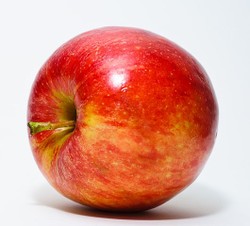

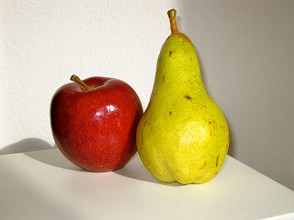
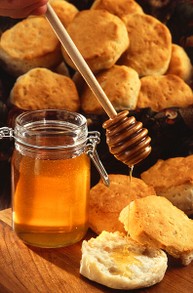
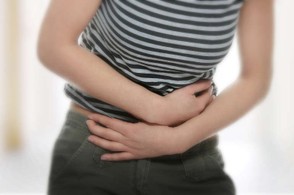



 Headache on the Back of the Headon 03/11/2016
Headache on the Back of the Headon 03/11/2016
 Alcohol-Related Headacheon 03/09/2016
Alcohol-Related Headacheon 03/09/2016
 5 Myths About Water Drinkingon 03/09/2016
5 Myths About Water Drinkingon 03/09/2016


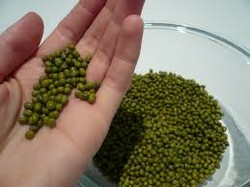
Comments
I have issues, been through many test, finally determined I have low blood sugar. Any issues related to this topic is vital to take care of . Great article.